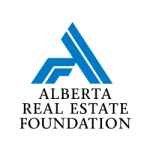Types of Unit Ownership | | Condominium Styles | Multi-Stage Developments | Conversion Condominiums | Buying New vs. Resale
There are many types of condominiums. It is important to know the differences between types so that you:
- choose the one that best suits your needs, lifestyle, and budget
- understand what you have complete ownership and control over
When you buy a condo, you get exclusive title and ownership of your unit and shared ownership of the common property. Unless the bylaws say otherwise, you are generally responsible for maintaining, repairing, and making improvements to your own unit, while the condominium corporation is responsible for the common areas.
Types of Unit Ownership
There are two types of condominium unit ownership: conventional and bare land. These refer to the boundaries of the condominium unit.
Conventional Condominiums
A conventional condominium is the most common form of condominium. It typically refers to a condominium unit that is located within a building. Unit boundaries are identified by referring to floors, walls, and ceilings, as opposed to markings on a plot of land.
Owners of conventional condominiums have full (freehold) ownership of everything inside the unit based on the boundaries set out in the condominium plan. In some cases, a unit’s exterior windows and doors are part of the unit. In other cases, they may be common property. Check the condominium plan and bylaws to determine what is part of the unit and what is common property.
Common property in conventional condominiums may include air conditioning, plumbing, sprinkler systems, elevators, fitness centres, pools, hallways, lobbies, and exterior spaces like gardens.
Bare Land Condominiums
A bare land condominium unit is a plot of land that may or may not already be developed. The boundaries of the units (e.g. townhouse, duplex, detached home) are described by reference to survey markers.
Owners of bare land condominiums have full (also called a “freehold” or “fee simple”) ownership of everything inside the unit’s land boundaries, which may include a house, garage, trees, and shrubs. If the unit has been developed, a Real Property Report will show the unit’s boundaries and the location of all structures within the boundaries.
Owners are generally responsible for maintaining everything inside the boundaries of their unit, which makes bare land condo ownership more like traditional home ownership. For example, owners are responsible for shoveling snow, landscaping, and making exterior repairs (such as replacing the roof and siding). However, in some cases, condominium corporations are responsible under the bylaws for such maintenance and repairs . “Managed property” is any unit or part of a unit that a corporation must under bylaw maintain, repair or replace . Managed property is different than common property as the owner still retains freehold ownership over the managed property.
Common property in bare land condominiums will vary depending on the type of development. It may include sidewalks, roads, parks, and/or recreational facilities like pools or golf courses.
Condominium Styles
Condominiums come in all shapes and sizes. Apartment-style units located in high or low rise buildings are generally conventional, while townhouses or detached dwellings are often bare land units.
High-rise
Most commonly associated with the term condominium, high-rise buildings offer new or resale conventional condominium units with a variety of amenities. Some high-rise buildings may be conversion properties. Some may be mixed-use developments with retail or commercial condo units on the lower levels.
Low-rise
Sometimes a more affordable option to high-rise condos, low-rise condominium buildings also offer new or resale conventional condominium units. In Alberta, many low-rise condominium buildings are converted rental properties.
Lofts
Loft-style condominiums are often converted warehouse, commercial, or industrial buildings. They are available as new or resale conventional condominium units, and the amenities available will vary significantly depending on the property.
Townhouses or Rowhouses
Townhouses or rowhouses are a great option for families or individuals looking for outdoor space. They are available as conventional or bare land condominiums.
With conventional townhouses or rowhouses, the exterior is common property that the condominium corporation usually maintains (though potential buyers should always check the bylaws to confirm).
If the townhouse or rowhouse is a bare land condominium, the owner has ownership of the land up to the property’s boundaries. This means the owner is responsible for landscaping and exterior repairs (e.g. patio or deck) unless the bylaws say otherwise. Sometimes condominium corporations are responsible under the bylaws for such maintenance and repairs.
Buyers should always confirm what type of condominium they are purchasing.
Detached Homes
Occasionally, detached homes are part of a condominium complex. A gated community may be an example of a condominium complex that includes detached homes. Common property would include the roadways, sidewalks, and any recreational facilities. Luxury developments may include golf courses or tennis courts as common property amenities.
Multi-Stage Developments
New condominium developments are sometimes built in multiple stages. A developer may complete one building, sell it, and then proceed to develop the next building. If you’re thinking of buying a new condominium, inquire as to whether it is a multi-stage project and consider whether subsequent parts of the development will benefit you or cause potential problems.
Multi-stage developments can benefit owners by adding new services and facilities, but they can also lead to obstructed views, changes in parking, and an increased number of residents accessing the common property. Potential buyers also need to consider that as additional buildings are completed, the number of owners will increase and therefore the condominium corporation will grow in size, which could impact the operating budget and reserve fund, which could in turn lead to higher condo contributions (fees) for owners. Developers may also change or cancel plans for future stages.
In Alberta, developers can create multi-stage condominium developments in two ways: phased development or barely blended development.
Phased development model
Developers using a phased development model must follow rules outlined in the Condominium Property Act and Condominium Property Act Regulation. These rules require developers to file a phased development disclosure statement with the initial condominium plan. This statement includes information about:
- the number of buildings
- the number of units for each phase and
- common property elements (for example, parking, recreation facilities, etc.)
Barely blended model
Developers using a barely blended development model do not have to follow any special rules. With a barely blended model, a developer divides a large parcel of land into multiple bare land units. These units are then developed in stages. As each bare land unit is ready for development, it is redivided and developed into a conventional condo building or smaller bare land condo units.
Conversion Condominiums
Conversion condominium buildings were once used for non-condominium purposes. They may have been warehouses, breweries, rental properties, or commercial properties. Loft-style developments are a common example of a conversion condominium. Conversion properties ar|e generally conventional condominiums and will vary greatly in style and size.
Interested buyers should always consult with a lawyer and real estate agent before purchasing to ensure all important documents are collected and reviewed.
Buying New vs. Resale
Whether you are buying a new or resale condominium, there are many pros and cons you should consider.
Pros of buying a new condo
- Developers must provide you with certain documents before you buy
- Once completed, it is move-in ready
- You may be able to customize your unit by picking out finishes, flooring, and appliances
- Reduced risk of having to undergo costly, noisy and intrusive repairs and renovations
- Modern building amenities
- New home warranty coverage
Cons of buying a new condo
- If construction isn’t complete, you must rely on drawings, floor plans, and sample materials to determine what the condo and common property will look like.
- You may wait months for construction to be compete. Your initial deposit will be tied up until construction is substantially completed.
- If construction is behind schedule, there could be a delay with your move-in date.
- You may have to pay occupancy fees (condo rent) if you move in before you receive the certificate of title from the developer.
- The condominium’s estimated budget could change drastically once the condominium is completed, which could result in increased condo contributions (fees).
Check out the Canada Mortgage & Housing Corporation’s Tips for Buying a New Condo (keep in mind this information is not Alberta-specific)
Pros of buying a resale condo
- The possession date is usually much sooner than a new development.
- You can see what the unit and complex looks like rather than relying on drawings and floor plans.
- The condominium corporation will have an established budget and reserve fund. To see if there are any problems on the horizon, you can review the corporation’s financial statements with your lawyer and document reviewer.
- Talk with other owners, members of the condominium board, and the property manager about the complex.
- Ask to review the condominium board’s meeting minutes for any ongoing problems.
Cons of buying a resale condo
- The unit may not be move-in ready and/or could need renovations.
- The amenities may be older or limited.
- The common property may require significant, costly repairs in the future.
- The seller does not have to provide any documentation. The onus is on the buyer to request important documents.
Further resources
- Ask Maria: Drippy Dilemma – how to protect yourself against leaky condos
- Canada Mortgage & Housing Corporation: Tips for Buying a Resale Condo (note: information is not Alberta-specific)
Last Updated: June 2022


